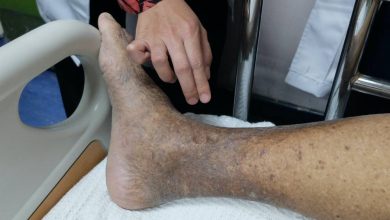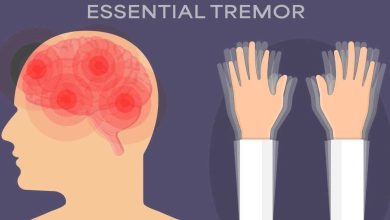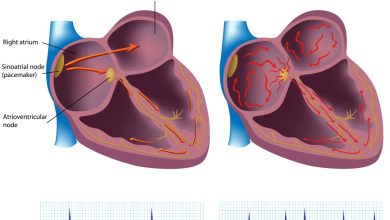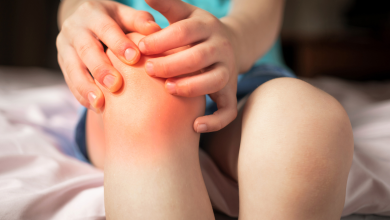Bags Under Eyes Symptoms, Causes, Diagnosis and Treatment
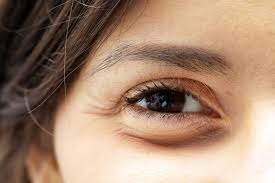
What Are Bags Under Eyes?
Bags under eyes are mild swelling or puffiness under the eyes. They’re common as you age and the tissues around your eyes weaken, including some of the muscles supporting your eyelids. Fat that helps support the eyes can then move into the lower eyelids, causing them to appear puffy. Fluid may also accumulate below your eyes.
Bags under eyes are usually a cosmetic concern and rarely a sign of a serious condition. Natural Remedies for Eye Bags, such as cool compresses, can help improve their appearance. For persistent or bothersome under-eye puffiness, eyelid surgery may be an option.
What Are The Symptoms Of Bags Under Eyes?
Symptoms of bags under eyes can include:
- Mild swelling
- Saggy or loose skin
- Dark circles
When to see a health care provider
You may not like the way they look, but bags under eyes are usually harmless and don’t require medical care. See your health care provider if the condition causes vision problems, irritation or headaches or is accompanied by skin rash.
Your health care provider will want to rule out other possible causes that can contribute to the swelling, such as thyroid disease, infection, connective tissue disease or an allergy. You may be referred to a health care provider who specializes in the eyes (ophthalmologist), plastic surgery or plastic surgery of the eyes (oculoplastic surgeon).
What Causes Bags Under Eyes?
Bags under eyes are caused when the tissue structures and muscles supporting your eyelids weaken. The skin may start to sag, and fat that’s usually around the eye can move into the area below your eyes. Also, the space below your eyes can gather fluid, making the area look puffy or swollen. Several factors cause or worsen this effect, including:
- Aging
- Fluid retention, especially upon waking or after a salty meal
- Lack of sleep
- Allergies
- Smoking
- Genetics — under-eye bags can run in families
- Medical conditions, such as dermatitis, dermatomyositis, renal disease and thyroid eye disease
Are Eye Bags A Serious Concern?
Eye bags are not at all a serious concern, but an indication to review your lifestyle choices. Eye bags tend to affect your appearance thus can have social and psychological impacts.
How Are Bags Under Eyes Diagnosed?
Bags under eyes are evident without a medical diagnosis. You may have the skin under your eyes assessed by a healthcare professional to learn more about what’s causing the puffiness or if you’re interested in medical or surgical treatment.
How to Get Rid of Eye Bags at Home?
If you only have puffy eyes on occasion, you may find a quick fix with an at-home remedy. Several Natural Treatment for Eye Bags are available, all using items you probably have around the house. Just remember that these are only temporary fixes and won’t repair the underlying problem if eye bags are an ongoing problem. Here are four simple solutions for eye bags that are a good first step.
1. Apply Tea Bags
Wondering how to get rid of eye bags in minutes? Dip a tea bag in water and then refrigerate for ten minutes. Once cool, place the chilled tea bags on your eyes for around 20 minutes, then wash the area with plain water. You should notice an improvement immediately. Bags from caffeinated tea may work better because the caffeine will increase the blood flow and tighten the blood vessels, which decreases puffiness.
2. Try Cold Compresses
Another option for how to get rid of bags under eyes instantly is with a cold compress. Place a cool washcloth on your eyes for about ten minutes. The cold of the cloth can drain the extra fluid from your eyes, making you look well-rested in just a few minutes.
3. Use a Neti Pot
Allergies can cause puffy eyes because of congestion and inflammation. A neti-pot can help clear out the sinuses and alleviate allergy issues, which may also decrease the puffiness under the eyes.
4. Use the Right Products for Puffy Eyes
You’ll find a lot of products on the market that claim to reduce bags under the eyes. Look at the ingredients for the most effective products, such as cucumber, chamomile, and arnica. All these ingredients are known for reducing inflammation and tightening the skin.
Mild retinols can promote the stimulation of collagen while tetrapeptide-5 and heparin sulfate may help reduce puffiness. Caffeine products are also beneficial for getting rid of puffy eyes. Remember to be careful while applying any products close to the eyes.
How Are Bags Under Eyes Treated?
Bags under eyes are usually a cosmetic concern and don’t require medical treatment. Home and lifestyle treatments may help reduce puffiness. But if you’re concerned about the appearance of under-eye swelling, medical and surgical treatments are available. Treatment may not be covered by medical insurance if it’s done solely to improve your appearance.
Medications
If you think the swelling under your eyes is caused by an allergy, ask your health care provider about prescription allergy medication.
Therapies
Various wrinkle treatments are used to improve the appearance of puffiness under the eyes. These include laser resurfacing, chemical peels and fillers, which may improve skin tone, tighten the skin and rejuvenate the under-eye area. For people with brown or Black skin, laser resurfacing carries the risk of permanent changes in skin color (hyperpigmentation or hypopigmentation). Talk with your health care provider about which laser resurfacing technique reduces this risk.
Eyelid surgery
Depending on what’s causing bags under the eyes, eyelid surgery (blepharoplasty) may be a treatment option. Your surgeon will tailor your blepharoplasty (BLEF-uh-roe-plas-tee) to your unique anatomy and needs, but in general the procedure involves removing excess fat through an incision in the natural crease of the upper eyelid or inside the lower lid. The procedure is usually done in an outpatient setting with local anesthesia.
In addition to correcting bags under eyes, blepharoplasty can also repair:
- Baggy or puffy upper eyelids
- Excess skin of the upper eyelid that interferes with your vision
- Droopy lower eyelids, which may cause white to show below the iris — the colored part of the eye
- Excess skin on lower eyelids
Talk with your health care provider about the side effects of eyelid surgery — dry eyes, watery eyes, pain, swelling, bruising and blurred vision. Rare complications include visual loss, bleeding, infection, injury to eye muscles, corneal abrasion and drooping of an eyelid.
Bags Under Eyes Prevention:
Since lifestyle has a major impact on contributing or preventing eye bags, one must choose a healthy lifestyle in order to look and stay healthy. For the purpose:
- Drink at least 12 glasses of water a day.
- Consume a diet full of fresh vegetables and fruits.
- Quit cigarette smoking and drinking alcohol /or drink in moderation.
- Take proper sleep for at least 8 to 9 hours a day.
- Exercise for at least 20 minutes a day.
- Consume high fiber diet; limit the use of salt in your diet.
Reference:
https://www.mayoclinic.org/diseases-conditions/bags-under-eyes/symptoms-causes/syc-20369927
https://www.mayoclinic.org/diseases-conditions/bags-under-eyes/diagnosis-treatment/drc-20369931
https://lookyounger.net/blog/get-rid-eye-bags/
Related Articles:
5 Foods for the Eyesight and Eye Health
Eye Floaters Causes, Symptoms, Diagnosis and Treatment
Vitamin C – Using Oranges May Cure Eyesight
Eyestrain Causes, Symptoms, Diagnosis and Treatment
Pink Eye (conjunctivitis) Causes, Symptoms, Diagnosis and Treatment
Rapid Eye Movement Sleep Symptoms, Causes, Diagnosis and Treatment
Eye Melanoma Symptoms, Causes, Diagnosis and Treatment
Dry Eyes Symptoms, Causes, Diagnosis and Treatment
Trachoma Causes, Symptoms, Diagnosis and Treatment
Natural Remedies for Retinal Vein Occlusion to Help Relieve Itchy Eyes
Fungal Eye Infection Causes, Symptoms, Diagnosis and Treatment
By : Natural Health News

